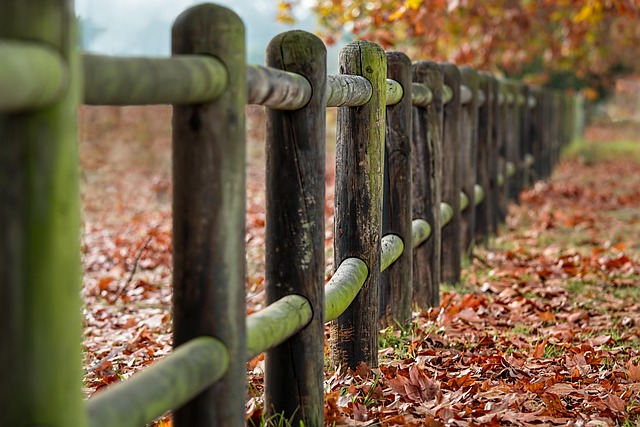Introduction:
Fences serve not only as structural elements but also as artistic statements, enhancing your outdoor space. Fence staining and sealing are essential practices to preserve the beauty and longevity of wooden fences. This comprehensive guide delves into the intricacies of fence staining, from understanding its benefits and exploring various types to mastering preparation techniques and choosing the perfect stain. We’ll also discuss sealing for protection, offering maintenance tips for exceptional results, ensuring your fence stands the test of time.
- Understanding Fence Staining: Benefits and Types
- Preparing Your Wooden Fence for Staining
- Choosing the Right Stain: Color Options & Application
- Sealing for Protection: Why and How
- Maintenance Tips for Long-Lasting Results
Understanding Fence Staining: Benefits and Types
Fence staining is not just about enhancing the aesthetics of your wooden fence; it serves as a protective layer, too. The process involves applying a pigmented sealer or paint to the wood, which can significantly extend its lifespan by shielding it from the elements. Regular staining also helps to maintain the fence’s color and appearance, making it an affordable way to keep your outdoor space looking its best.
There are various types of fence stains available, each with unique benefits. Water-based stains are eco-friendly and easy to clean up, while oil-based options offer deeper colors and longer-lasting protection. Some stains also come with added UV protectors, ensuring your fence stays vibrant and robust even after prolonged sun exposure.
Preparing Your Wooden Fence for Staining
Before applying any stain or sealer, your wooden fence needs proper preparation to ensure optimal results and longevity of the finish. Start by thoroughly cleaning the fence to remove any dirt, dust, mildew, or mold that might be present. This can typically be done using a pressure washer or a stiff brush and mild detergent. Make sure to follow the manufacturer’s instructions for the cleaning solution you choose.
Once cleaned, inspect the wood for any damaged or rotten sections. Repair these areas by replacing or patching as needed. Sanding the fence slightly can also help with adhesion, especially if the wood is rough or has an old finish. Remove any loose debris and ensure the fence is dry before proceeding to the staining process.
Choosing the Right Stain: Color Options & Application
When choosing a fence stain, color options are vast and varied, designed to complement any wooden fence style or aesthetic. From natural, earthy tones that highlight the grain of the wood to vibrant, bold shades that add a striking visual impact, there’s a stain to suit every preference. Consider the overall look you want to achieve – whether it’s a subtle change for a more organic feel, or a dramatic transformation that makes your fence a standout feature.
Application is another key factor in selecting the right stain. Some stains are designed for easy, one-coat application, while others require multiple coats for optimal coverage and color intensity. Read the manufacturer’s instructions carefully to understand the recommended application method, the number of coats needed, and drying times. This will ensure a professional finish that lasts for years to come.
Sealing for Protection: Why and How
Wooden fences, when properly maintained, can enhance the beauty of any outdoor space. One crucial aspect of this maintenance is sealing and staining. Sealing plays a vital role in protecting your fence from the elements, ensuring its longevity. Over time, sunlight, rain, snow, and harsh temperatures can damage wood, leading to cracking, fading, and eventual rot. A good seal creates a protective barrier, blocking out moisture and UV rays, which are primary culprits behind wooden fence deterioration.
By sealing your fence, you’re not just preserving its aesthetic appeal but also its structural integrity. This process involves applying a coat of protective material, usually a specialized paint or sealant, to the wood’s surface. These products fill in pores and cracks, preventing water penetration and mold growth. A well-sealed fence will remain vibrant, rich in color, and free from unsightly stains for many years.
Maintenance Tips for Long-Lasting Results
Regular maintenance is key to ensuring your stained and sealed fence remains beautiful and durable for years to come. Start by cleaning the fence regularly to remove any dirt, debris, or mold buildup. Use a soft brush or garden hose to gently wash the surface, then dry it thoroughly.
Inspect the fence at least once a month for any signs of wear, chipping, or peeling. Repaint or re-seal any damaged areas promptly using high-quality products designed for wood. Maintaining a consistent sealing schedule every 1-2 years will protect the fence from harsh weather conditions and prolong its lifespan.
